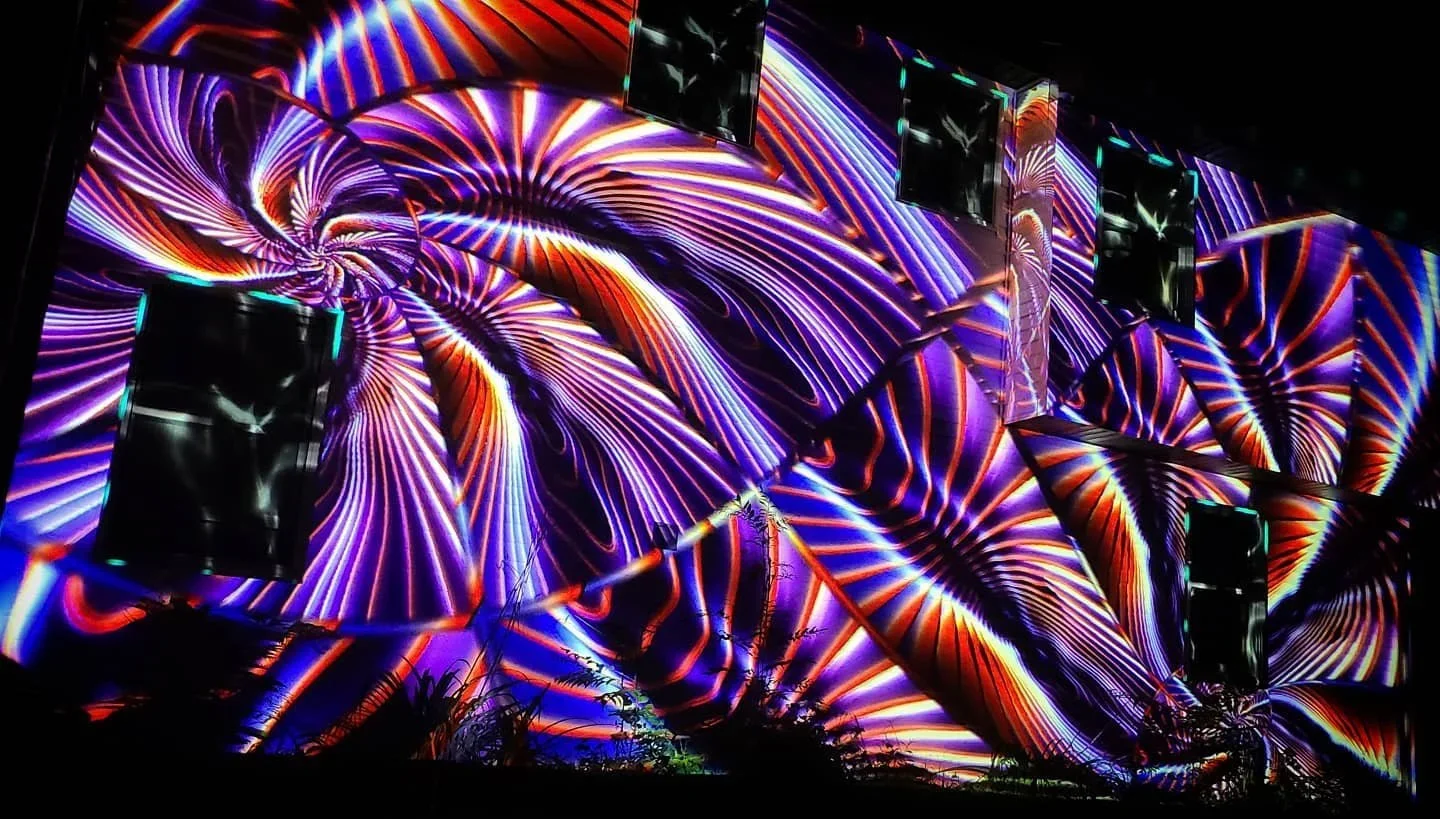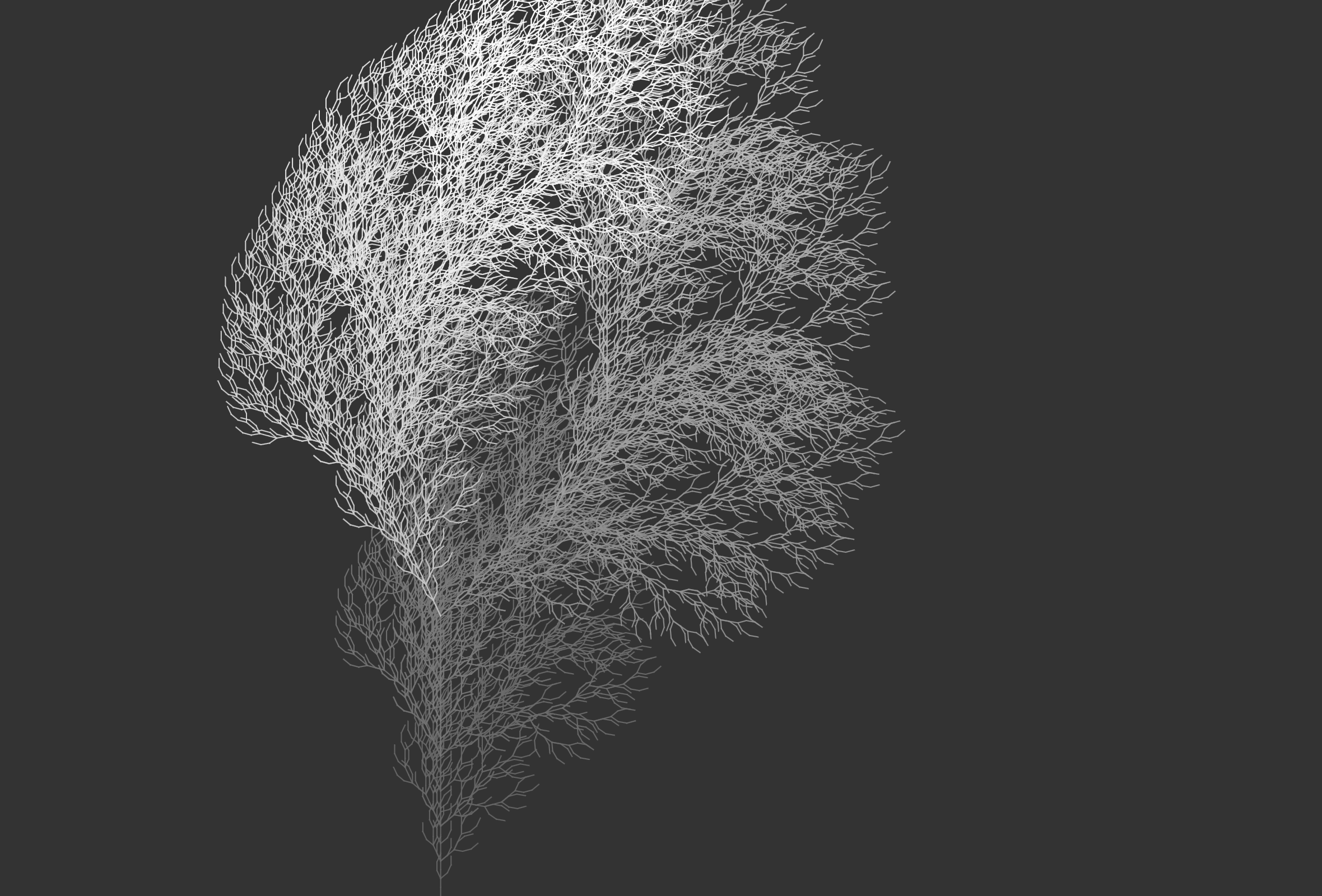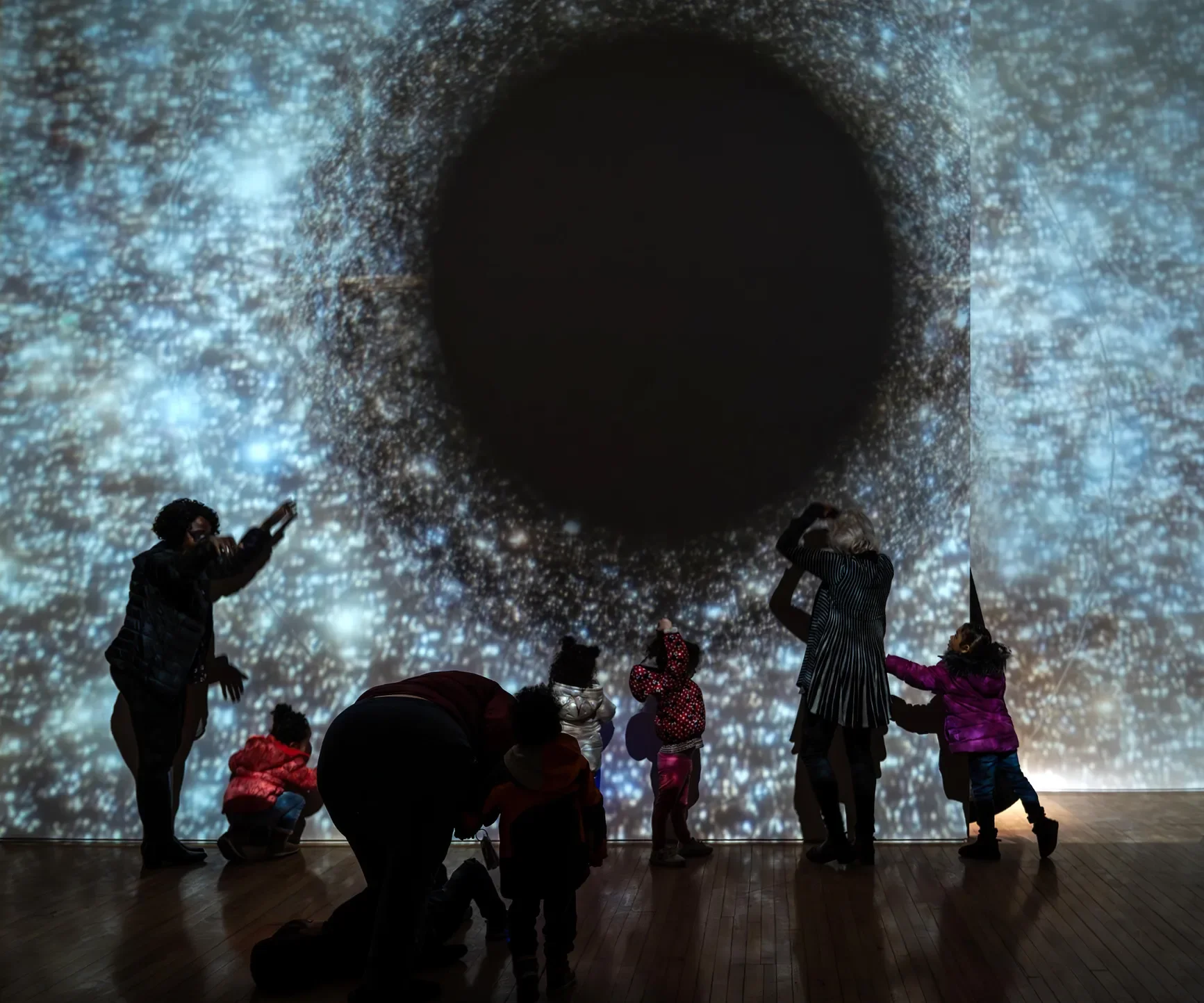Light, Logic, and the Coming Collapse
Written by: Edward Patrick Kranz
When light learns to think, the city must learn to watch.
Before the blackout
In five weeks, FEED Media Art Center will go dark. Then it will start to hum. On December 13, 2025, the center hosts the North American premiere of ATOTAL: Sound, Light, and the Collapse of Order — a performance in which French composer Franck Vigroux sculpts pressure and distortion, while an elusive visual architect builds a real-time system of light that responds, resists, and eventually breaks free.
A visual precedent: thousands of independent points behave in swarm-like motion, a precursor to real-time generative visuals of ATOTAL.
From an essay on “NFTs and Generative Art” (Aleksandra Art Blog, 2022) — generative-art concept illustration.
The system waiting behind the curtain
At the heart of ATOTAL sits a codebase that behaves more like weather than software. The anonymous visual architect writes algorithms that listen to live sound data, translating frequencies into motion, brightness, and velocity. Each performance is unique because the code interprets, rather than reproduces, Vigroux’s sound.
A brief origin story
The visual architect began in programming and telecommunications, fields obsessed with stability. Generative art flipped that obsession. Code could be instructed to misbehave productively. The move from logic to motion came from one simple rule: 'Programs are processes embedded in reality; they should act, not illustrate.'
The meaning of generative
Generative art is not about randomness. It is about rules that run. The artist designs initial conditions; the system performs outcomes. Each iteration is different but coherent.
Listening through light
ATOTAL’s opening moments promise unity. Light and sound align in surgical precision. Then tiny mismatches emerge — milliseconds first, seconds later. The drift feels physical. Your perception starts working to reconnect what has already separated.
At live performance scale: a composer’s sonic architecture meets a visual system in real-time at a media-art venue.
Photo courtesy of “Interactive Generative Art Installations Using Processing – Peerdh” (2024).
Preparing your senses
If you plan to attend, arrive early. Let your eyes adapt to FEED’s black. Sit slightly off-center; that’s where phase becomes visible. During quiet sections, watch for lingering afterimages. They reveal how the system remembers.
The room built for risk
FEED Media Art Center is small enough to feel like a lab and engineered like a cinema. The projection wall fills peripheral vision. The sound system reaches into bone.
The conversation with Vigroux
Franck Vigroux calls his music 'the sound of structures eroding.' The visual system answers with light that tests the same boundary. Together they construct what he once described in interview as 'a total work that must learn how to fall apart.'
Why failure is the design
In technology culture, malfunction equals error. In ATOTAL, malfunction equals meaning. The system’s controlled drift demonstrates how all networks — musical, digital, social — tend toward entropy.
Precedents in motion
Before ATOTAL, the architect’s generative works explored autonomy at smaller scales — Pixel White Noise, Chronographies, Still Living — each proving that minimal gestures could sustain emotion.
Code becomes organism: lines and particles evolve across the screen in a generative system designed to think.
Adapted from “Algorithmic Art Generation Using OCaml’s Functional Programming Features” (Peerdh Blog, 2024).
The question of authorship
Who creates an artwork that writes itself? The human sets the rules. The code makes the choices. The viewer constructs the experience. Authorship becomes distributed.
The ethics of spectacle
Generative light has become a staple of electronic festivals. ATOTAL’s visual design refuses spectacle for clarity. Every burst, delay, and fade serves perception, not thrill.
Erie’s role in the equation
Erie’s creative infrastructure — FEED, Erie Arts & Culture, Erie Art Company — forms the ecosystem that made this show possible. The city offers what major centers often cannot: focus and access.
How to watch a system think
During the performance, the visuals may appear abstract. Treat them as language. Repetition equals grammar. Drift equals punctuation. The experience resembles weather. You can describe it but not command it.
A vast black-box gallery rendered into motion: live generative light traces respond to unseen data.
Courtesy of X (Photo by “Generative Art Installation – Processing/Interactive R&D”, Peerdh Blog, 2024) — image published under editorial use.
What the artist won’t say
The visual architect rarely speaks about meaning. Attention always returns to systems — inputs, thresholds, behaviors. Yet the moral dimension is clear: perfection without resistance is propaganda.
Technology as a mirror
ATOTAL arrives in an age where automation writes, paints, and composes. Watching a human choose to collaborate with code reframes the debate. The system is not imitation. It is dialogue.
Why this matters now
Synchronization saturates modern life. Notifications, playlists, timelines — everything arrives on the beat. ATOTAL interrupts that rhythm. It restores the human skill of witnessing misalignment without panic.
The night ahead
On December 13, the lights at FEED will fade to black. A low tone will rise. The code will begin listening. Within minutes, sound and light will fuse, then fracture. By the end, the room will hold a collective silence dense enough to feel like matter.
Epilogue: code that breathes
An artwork that behaves is never finished. Each performance will teach the system something new. Each audience will teach it how attention feels. When the projection starts on December 13, remember: you are not watching effects. You are witnessing dialogue. Code will breathe. The city will answer.
The host venue: FEED Media Art Center, Erie — the intimate black-box setting that amplifies real-time media art and generative performance. Courtesy of FEED Media Art Center archival photo, Erie (2025).





